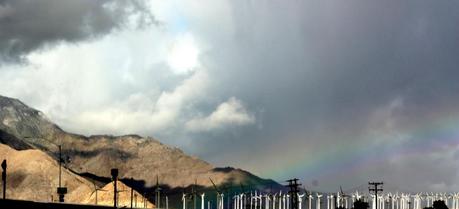 Scientists find out how wind turbines affect lightning; it may help energy companies save money. (Credit: Flickr @ Sean Freese https://www.flickr.com/photos/seanfreese/)
Scientists find out how wind turbines affect lightning; it may help energy companies save money. (Credit: Flickr @ Sean Freese https://www.flickr.com/photos/seanfreese/)Scientists at the Polytechnic University of Catalonia (UPC) have demonstrated the relationship between the movement of wind turbines and the generation of lightning.
The Lightning, Atmospheric Electricity and High Voltage Research Group on the Terrassa Campus of the UPC is led by Professor Joan Montanyà. The group has found a direct relationship between the movement of wind turbines on wind farms and the electrical discharges triggered by lightning in certain atmospheric conditions.
The discovery, published in the Journal of Geophysical Research and Nature (see footnote), may help prevent breakdowns on wind farms involving millions in losses to energy companies. The study was carried out by Joan Montanyà and Oscar van der Velde of the UPC, and Earle R. Williams of the Massachusetts Institute of Technology.
Under favorable atmospheric conditions any elevated structure can generate upward lightning flashes. Even aircraft can do so—in fact, height and movement are two of the factors that contribute to this phenomenon. The tips of wind turbine blades move at speeds of several tens of meters per second. However, no one had previously demonstrated the relationship between this movement and the triggering of lightning discharges.
Through its lightning mapping array located in the Terres de l’Ebre region of Tarragona, the UPC’s Lightning, Atmospheric Electricity and High Voltage Research Group (LRG) has detected electrical discharges from wind turbines that are repeated periodically. The duration of these lightning discharges ranges from a few minutes to over an hour, depending on the storm conditions.
Researchers have made high-speed video recordings of lightning flashes caused by wind turbines on the Rubió wind farm. The LRG, which is a European benchmark in lightning studies, has recorded several upward lightning flashes caused by rotating wind turbines under clouds. These recordings were made at a distance of one kilometer from the wind turbine, with the camera set at a speed of 6668 frames per second and a resolution time of 150 microseconds.
The LRG’s work can be very useful because it can help describe the phenomenon and establish prevention systems. Though it occurs on a daily basis, lightning is still one of the least known atmospheric phenomena. The study of lightning generated by the wind turbine blades and its relationship with the frequency of rotation will help characterize and define flashes, and above all prevent them. It will also reduce costs for turbine manufacturing companies anpolyd wind energy generation companies, which lose millions every year in damage caused by lightning.
Wind turbine blades are currently over 60 meters long and the nacelle can be located over 100 meters from the ground. The blades are made of composite materials that are very sensitive to the effects of electric discharges and lightning.
Depending on the region in which the farm is located, the damage can be severe. On the west coast of Japan, for example, winter lightning is far more harmful than summer lightning. In fact, some wind farms have been forced to close because of storm damage.
Lightning flashes caused by wind turbines on the Rubió wind farm.
Montanyà, J., van der Velde, O., & Williams, E. (2014). Lightning discharges produced by wind turbines Journal of Geophysical Research: Atmospheres, 119 (3), 1455-1462 DOI: 10.1002/2013JD020225Montanyà, J., van der Velde, O., & Williams, E. (2014). Atmosphere: Turbines shoot upside-down lightning Nature, 506 (7488), 268-268 DOI: 10.1038/506268a
